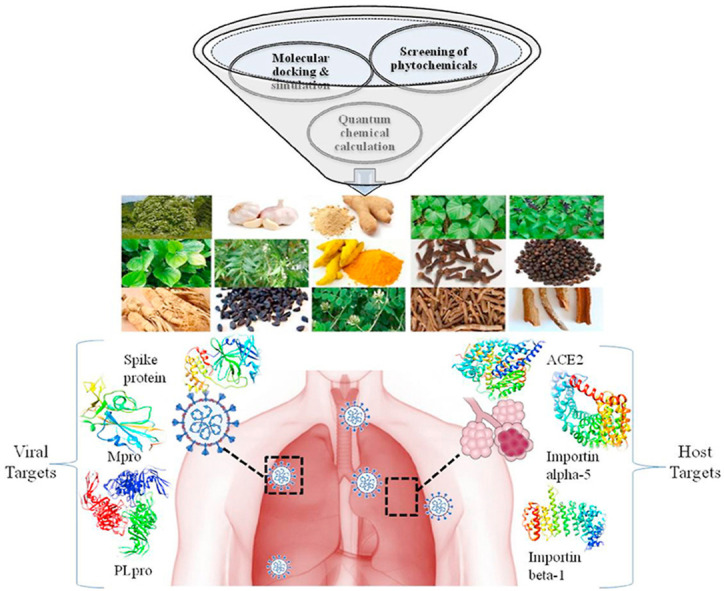- Record: found
- Abstract: found
- Article: not found
The dual role of phytochemicals on SARS-CoV-2 inhibition by targeting host and viral proteins

Read this article at
Abstract
Background
The severe acute respiratory syndrome-2019 has affected more than 190 million people around the world and caused severe crises throughout the globe. Due to rapid mutation in the viral genome, it became important to simultaneously improvise the host immunity while targeting the viral protein to reduce the severity of the infection.
Aim
The current computational work focuses on multi-level rigorous screening of 47 medicinal plant-based phytochemicals for discovering effective phytochemical inhibitors against the host and viral targets.
Experimental procedure
A total of 586 phytochemicals were analyzed in detail based on their drug-likeness, pharmacological properties, and structure-based activity against the viral proteins (Spike glycoprotein, Papain-like protease, and Main protease) and host proteins (ACE2, Importin-subunit α-5, and β-1). Phytochemicals showing higher binding affinity with the dual capacity to target both the categories of proteins were further analyzed by profiling their chemical reactivity using Density-functional theory (DFT) based quantum chemical methods. Finally, detailed molecular dynamics simulations were performed to analyze the interactions of the complexes.
Results and conclusion
The results revealed that the selected phytochemicals from Andrographis paniculata, Aconitum heterophyllum, Costus speciosus and Inula racemosa may have the capacity to act with prominent affinity towards the host and viral proteins. Therefore, The Combination of active phytochemicals of these plants may prove to be more beneficial and can be used for developing the potential phytotherapeutic intervention.
Graphical abstract
Highlights
-
•
COVID-19 caused severe crisis throughout the globe.
-
•
Current drug discovery efforts are targeting SARS-CoV-2 viral and host proteins using repurposed drugs.
-
•
Screening of 586 phytochemicals from 47 medicinal plants against both the host as well as viral targets.
-
•
Phytochemicals probably produces an inhibitory effect by acting the protein targets and thus help in reducing the burden SARS-CoV-2 infection.
Related collections
Most cited references57
- Record: found
- Abstract: found
- Article: not found
Clinical features of patients infected with 2019 novel coronavirus in Wuhan, China
- Record: found
- Abstract: found
- Article: not found
AutoDock4 and AutoDockTools4: Automated docking with selective receptor flexibility.
- Record: found
- Abstract: found
- Article: not found

